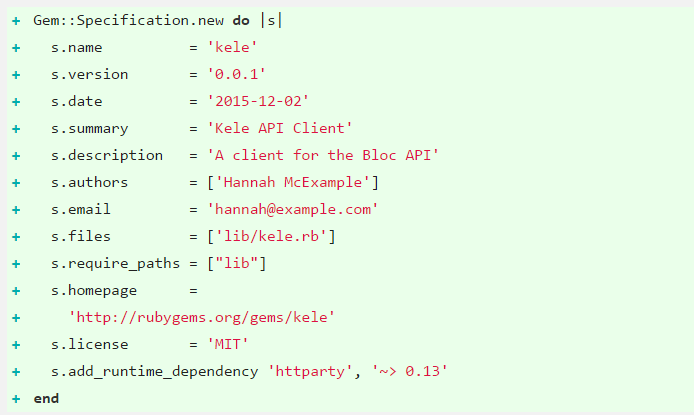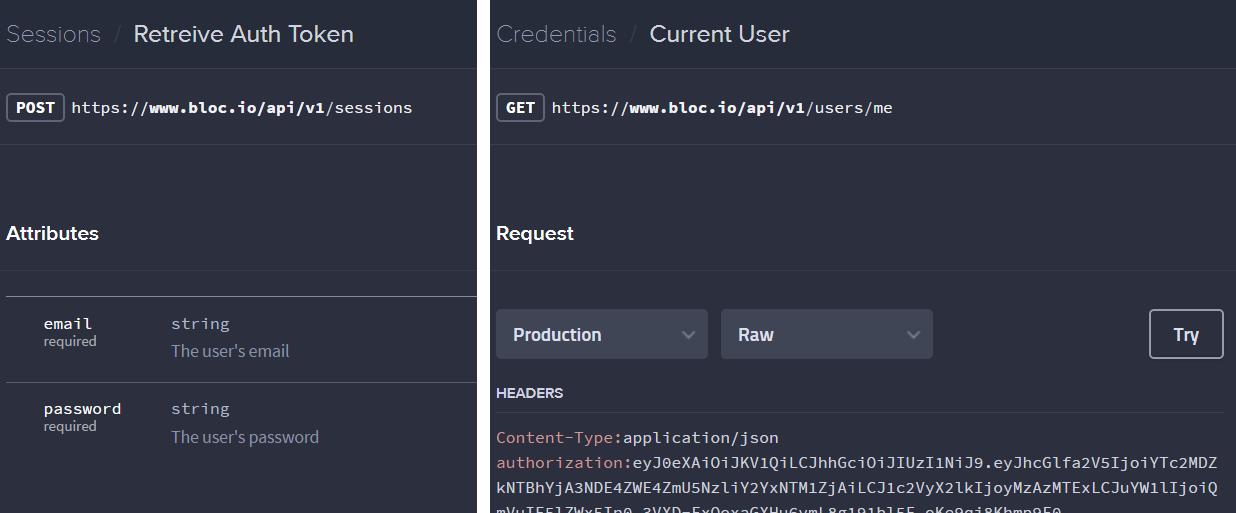Summary
MontGem is a Ruby Gem API Client with a main function of receiving JSON feedback from Bloc’s API. The Gem will be able to interact with the Bloc API by sending & receiving information.
Problem
The ultimate goal is to build a Gem from scratch which can request and post information through the Bloc API. Below are some of the code challenges that need to be dealt with:
- Enabling the gem to interact with the API so it can perform various actions
- Initializing a request and storing the authorization tokens
- Specifying which endpoint the request should target
- Determining what attributes need to be passed in through the body
Solution
The following image depicts the initial setup for the gem. Some modifications were made to the below code.

This code is saved into a file: mont_gem.gemspec Since other the file is called from a Ruby method, any Ruby actions can be called on this file. It is important to note the .add_runtime_dependency of httparty. This program allows a Ruby interface which deals with the HTTP requests.
s.add_runtime_dependency 'httparty', '~> 0.13To specify where the request will be sent to, I used the following code to simplify the repetitive requests:
def bloc_api_url(end_point)
"https://www.bloc.io/api/v1/#{end_point}"
end
Once this is set up, you can enter the irb console to run the application:
2.3.0 :001 > require './lib/mont_gem.rb'
=> true
2.3.0 :002 > MontGem.new("email", "password")
=> #<MontGem:0x00000001190ec8 @auth_token="authorization_token_returned_here">If the user exists, the Bloc API returns the authorization token. This is the token that needs to be saved and passed in as a header for later requests.
@auth_token = response["auth_token"]@auth_token = response["auth_token"]
For every other method to follow, including get_me, and create_message(sender_email, recipient_id, subject, message), this @auth_token is passed through to gain initial access to the API request. The user must include the appropriate parameters, whether they are a string or a number, in order to complete the request.
Results
The end result is a fully operational Gem program which has the ability to interact with the Bloc APIARY. Once the @auth_token is saved, the Gem can commit GET or POST http actions upon user request.
Project Conclusions
This project helped me develop a greater understanding of how to construct and control a gem API program. I’m certain the experience of working this closely with JSON and an API client will help me in the future.